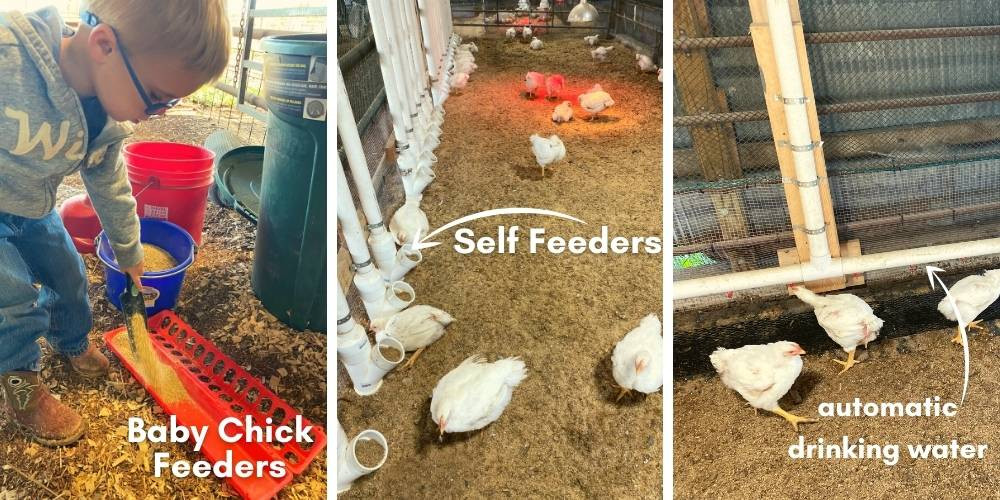Behind the Scenes of Raising Meat Chickens
posted on
September 19, 2021
Growing chickens has been quite the adventure since the first group came to the farm in June of 2021. Broilers are fast growing "meat chickens" only intended for slaughter, completely different from the "egg layer" chickens. Join me for a behind-the-scenes look at how they're raised on our farm.
Is there anything cuter than a baby chick? We choose to source our chicks from a local hatchery just up I-44 in Lebanon, MO where we pick them up as 3 day-old chicks. In the mid-1900s nearly every town had a poultry hatchery, and now only 12 remain nationwide. We're lucky to have one in our backyard! The hatchery raises over 200 varieties of poultry and most are shipped to their destination via USPS shipping.

These little puff balls need heat lamps to maintain their body temperature at 95 degrees. Their adult feathers begin growing quickly but will take about 2-3 weeks to fully feather out. Along with a heat source they only need fresh water and feed that we provide twice daily. Before you know it, they're outgrowing the small brooder pen and ready to move into our "big pen".

As "teenager" chicks, we know they're ready for the pen change in a few ways. First they can catch a little air when they "fly" and will start escaping their pen. Second, their feeders will be pecked completely clean at every feeding. Finally, after growing larger, the pen is looking a little cramped.
The best part of our big pen is the self-feeders and automatic drinking water system Ian made, no more filling feeders and refilling waters for us at chore time! Work smarter, not harder, right?!

Not long after making the pen change, we can start to differentiate males (cockrels) from females (pullets). Until this point they all look the same! Notice the red comb on top their head? Males have taller, dark red ones while female's are paler colored and shorter.

In their 6 week lifespan they will each eat about 14 lb of feed and produce approximately 49 lb of poop.
Ok, the poop quantity is an estimate. But believe me, these things are poop machines!
The target live weight for these birds is between 6-7 lb which yields a 4.5 lb whole chicken, ready-to-eat. If not for our proximity to a wonderful processor, we would NOT be raising chicken; on-farm processing is not for us! This poultry-only processing shop is inspected by the State of Missouri. Its ultra clean and run nearly exclusively by women.
Hope you enjoyed that little peek behind the barn door of our farm!



